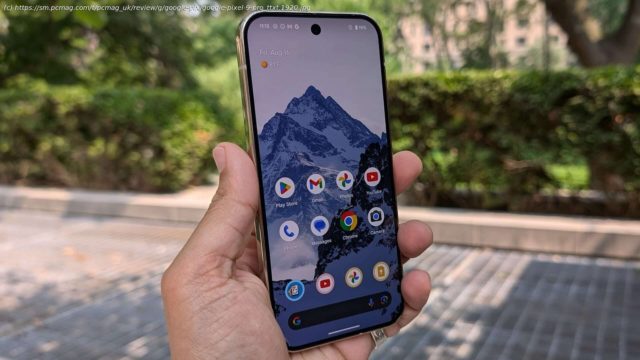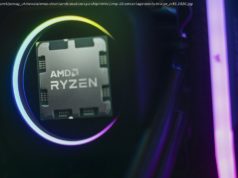A powerful addition to the Pixel lineup
The Pixel 9 Pro does everything the flagship Pixel 9 Pro XL can but in a smaller package for $100 less. It earns top marks for design and build quality, screen brightness, wireless speeds, battery life, and camera performance. As with the larger Pro XL, the 9 Pro’s Gemini AI features are somewhat undercooked at launch but still entertaining to use. If you want all the latest AI capabilities in a compact Android phone with no compromises, the Pixel 9 Pro makes a lot of sense at $999. The Pixel 9 Pro XL is an attractive upgrade if you prefer a bigger screen, but we recommend the Editors’ Choice-winning Pixel 9 (starting at $799) for most people because it offers nearly all the same features in an equally compelling package for $200 less. Design: The Pinnacle of Pixel
The Pixel 9 Pro is a new model in the Pixel family. Last year’s options included the smaller, lower-cost, and less-capable Pixel 8 along with the larger, pricier, full-featured Pixel 8 Pro, which was effectively the Pixel 8 Pro XL. The Pixel 9 Pro slots between the $799 Pixel 9 and the $1,099 Pixel 9 Pro XL. Google says it wanted to offer a version of the Pixel that has all the power of the top model but in a smaller form factor.
The simplicity of Google’s design philosophy has given way to an increase in elegance. The Pixel 9 Pro is as finely crafted as the other Pixel 9 models, with great attention to detail. Google has simplified the camera module from a long bar to a shorter pill shape, modernizing the lineup to better compete with the design of other top-tier phones. These are the best phones Google has designed, and it shows. Available in Hazel (gray/green), Obsidian (black), Porcelain (white), or Rose Quartz, the phone looks attractive no matter what shade you choose. The 9 Pro is comfortable to hold and use thanks to the frame’s rounded edges and seamless transition between materials.
The 9 Pro measures 6.0 by 2.8 by 0.3 inches (HWD) and weighs 7.0 ounces, which are the same dimensions and weight as the Pixel 9, but smaller than the 6.4 by 3.0 by 0.3 inches and 7.8 ounces of the Pro XL. Comparatively, the Apple iPhone 15 Pro ($999) is smaller at 5.8 by 2.8 by 0.3 inches and 6.6 ounces, while the Samsung Galaxy S24+ ($999) is taller and wider at 6.2 by 3.0 by 0.3 inches, but barely lighter at 6.95 ounces.
Corning Gorilla Glass Victus 2 protects the 9 Pro’s screen and back panel from scratches and breakage. Samsung uses the same glass for the S24+, while Apple uses its in-house Ceramic Shield.
The frame is made of polished aluminum, while the back panel is matte for contrast. Google applies the same look to the camera module, with reflective edges and a matte finish surrounding the triple camera array. A power button and volume rocker are located on the right side of the phone; these buttons are clicky, with a comfortable amount of travel. The bottom edge contains a down-firing speaker, a USB-C (v3.2) port, and a SIM tray that houses one physical SIM. The phone also supports one eSIM. Otherwise, the remainder of the frame is bare save for antenna lines and mic holes.
As for durability, the Pixel 9 Pro is rated IP68, meaning it is protected against dust and fresh water. This rating matches those of the iPhone 15 Pro and the Galaxy S24+ (and the other Pixel 9s).
Uniform bezels frame the display, and the front-facing camera is visible between the screen and the aluminum frame. Google has upgraded its Face Unlock feature, which uses the front camera, and it is now secure enough to be used with banking and finance apps. An ultrasonic fingerprint sensor is located under the display. Both of these biometric options worked reliably in testing.
The Pixel 9 Pro shares every design detail with the 9 Pro XL except size and weight. If the smaller build of the 9 Pro isn’t quite enough phone for you, you may enjoy the larger footprint of the 9 Pro XL. While the Pixel 9 shares the same size as the 9 Pro, it is available in a slightly different selection of colors and drops several features to reach its lower price. The 9 Pro just might be the Goldilocks option for many. Display: Bright and Clear
The 9 Pro features a radiant 6.3-inch OLED display with 2,856 by 1,280 pixels and a density of 495ppi. Everything on the screen is crisp and sharp. The brightness is quite good at 2,000 nits (typ) and 3,000 nits (peak). This means the screen is visible even in harsh lighting conditions like outdoor sunlight. It has a variable refresh rate ranging from 1Hz to 120Hz to balance power efficiency and performance.
The 9 Pro XL’s display is larger at 6.8 inches and has a resolution of 2,992 by 1,344 pixels. Otherwise, the larger phone shares the same display specs and performance. The Pixel 9 also has a 6.3-inch screen, but it has a resolution of 2,424 by 1,080 pixels at a density of 422ppi and a refresh rate that ranges from 60Hz to 120Hz.
The iPhone 15 Pro has a smaller screen at 6.1 inches at a resolution of 2,556 by 1,179 pixels at 460ppi, while the Galaxy S24+ has a somewhat larger 6.7-inch panel with 3,120 by 1,440 pixels at 513ppi. Performance: A Reliable Workhorse
Google’s Tensor G4 processor and Titan M2 coprocessor power the Pixel 9 Pro, the same as the other two Pixel 9 devices. The model we tested came with 16GB of RAM and 128GB of internal storage. Stepped-up models with more storage include 256GB for $1,099, 512GB for $1,219, and 1TB for $1,449. While the base iPhone 15 Pro and Galaxy S24+ also feature 128GB of storage, we think this simply isn’t enough internal storage at these price points.
The Tensor family of processors has historically not fared well on artificial benchmarks; it is tuned more for machine learning and AI applications.






